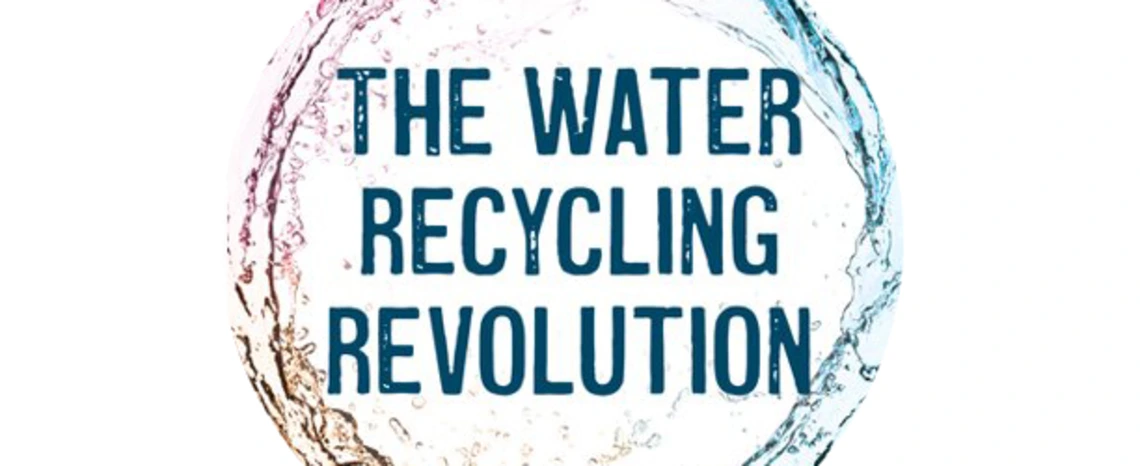BOOK REVIEW - The Water Recycling Revolution: Tapping into the Future

by William M. Alley and Rosemarie Alley
Rowman & Littlefield, Publisher
by Sharon B. Megdal
06/10/2022
 Summer break is a good time for reading. Although fiction is my preferred genre, I was eager to read the fourth and latest book by William M. and Rosemarie Alley, The Water Recycling Revolution: Tapping into the Future, which was published in April 2022. Memorial Day weekend, often considered the beginning of summer activities, turned out to be a good time for me to read the volume, which fills an important gap for water experts and the general public by providing an excellent primer on the history, current status, and future of water recycling.
Summer break is a good time for reading. Although fiction is my preferred genre, I was eager to read the fourth and latest book by William M. and Rosemarie Alley, The Water Recycling Revolution: Tapping into the Future, which was published in April 2022. Memorial Day weekend, often considered the beginning of summer activities, turned out to be a good time for me to read the volume, which fills an important gap for water experts and the general public by providing an excellent primer on the history, current status, and future of water recycling.
The Alleys have mastered the art of explaining science in the context of case studies based on extensive research. Their comprehensive overview includes 172 pages of text, which is supported by 35 pages of notes, a 10-page “Selected Bibliography,” and an index. The authors start by noting that less than one percent of US water demand is met by water reuse, with most of that being nonpotable use. With demand-supply imbalances growing in many parts of the country and world, there is increased focus on the potential of water reuse to meet both nonpotable and potable water needs.
The book substantially expanded my knowledge and filled in some gaps in my understanding of direct potable reuse efforts. On page 140, the Alleys explain: “Direct potable reuse (DPR) introduces highly treated wastewater either directly into a public water system or into the raw water supply immediately upstream of the intake of drinking water plant” [emphasis added]. The book also updated my understanding of the status of DPR in Cloudcroft, New Mexico. It told the succinct, interesting, and complete story of the indirect potable reuse efforts of San Diego, one that I’ve followed over the years. And the Alleys remind the reader that “de facto” reuse occurs all the time as upstream wastewater treatment plant operators discharge effluent into waterways that serve as the intake for drinking water of downstream communities.
The authors take care to avoid glossing over important science, but they make the science understandable. Indeed, they underscore the preeminent water quality concerns through their discussions of contaminants of emerging concern, bacteria and viruses, pharmaceuticals, and more. They clearly explain the role of the multiple stages of the treatment processes, along with redundant protections.
Through the various case studies, lessons learned are highlighted. Particular attention is given to the importance of public education and involvement; an entire chapter is dedicated to what the authors describe as the “breakthrough” story of Orange County Water District (OCWD) in California, where transparency and communication have been prioritized. Having recently visited OCWD’s water campus, along with their recharge basins, I could connect with what they described. The Alleys bring in some notable international experiences, including those of Toowoomba, Australia, and Singapore. I visited Singapore’s NEWater plant when visiting the country in early 2020. Arizona also figures into the book. The water recycling efforts of Scottsdale, Arizona, which has obtained (though not used) Arizona’s first DPR permit, is explained. When describing multiple efforts to use recycled water to make beer, Arizona’s Pure Water Brew Challenge, a collaboration of Pima County and the University of Arizona, is discussed. And the pioneering soil aquifer treatment work of (the late) former WRRC Director Sol Resnick and USDA researcher Herman Bouwer is duly acknowledged. Managed aquifer recharge or MAR is part of the water recycling story.
The book looks to future opportunities associated with decentralized approaches to water reuse, including those associated with collecting rainwater and graywater. The Alleys close by focusing on the One Water concept, noting that the movement “recognizes the vast potential for collaborative management when all aspects of water are viewed as a single integrated system” (p.167). Integrating water reuse of different types and scales has a role to play as communities consider the massive investments needed to address aging infrastructure. Here they also note challenges associated with regulatory uncertainties, financing, and trade-offs with water conservation.
There are a few things that, as I was reading, could have helped me follow some of the discussions a bit better. Simple maps could have helped place some of the case studies, including that of Colorado. And, in a few instances, time frames could have been made slightly clearer with explicit timelines provided. But their absence is not major; the stories are clear.
In summary, this book is a good read. It provides a thorough, realistic, and balanced view of the opportunities and obstacles associated with increased water recycling in the United States. I recommend putting it on your summer reading list.

